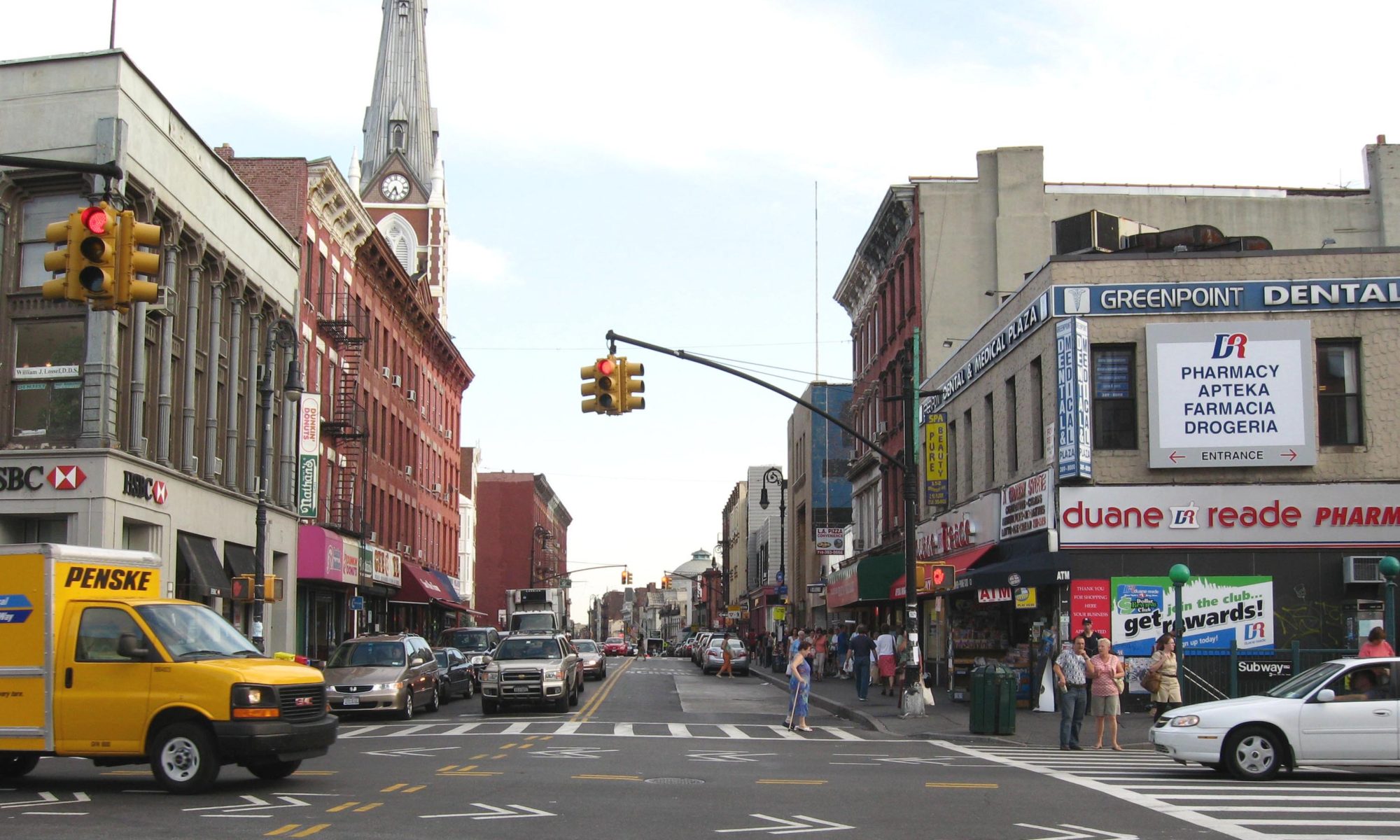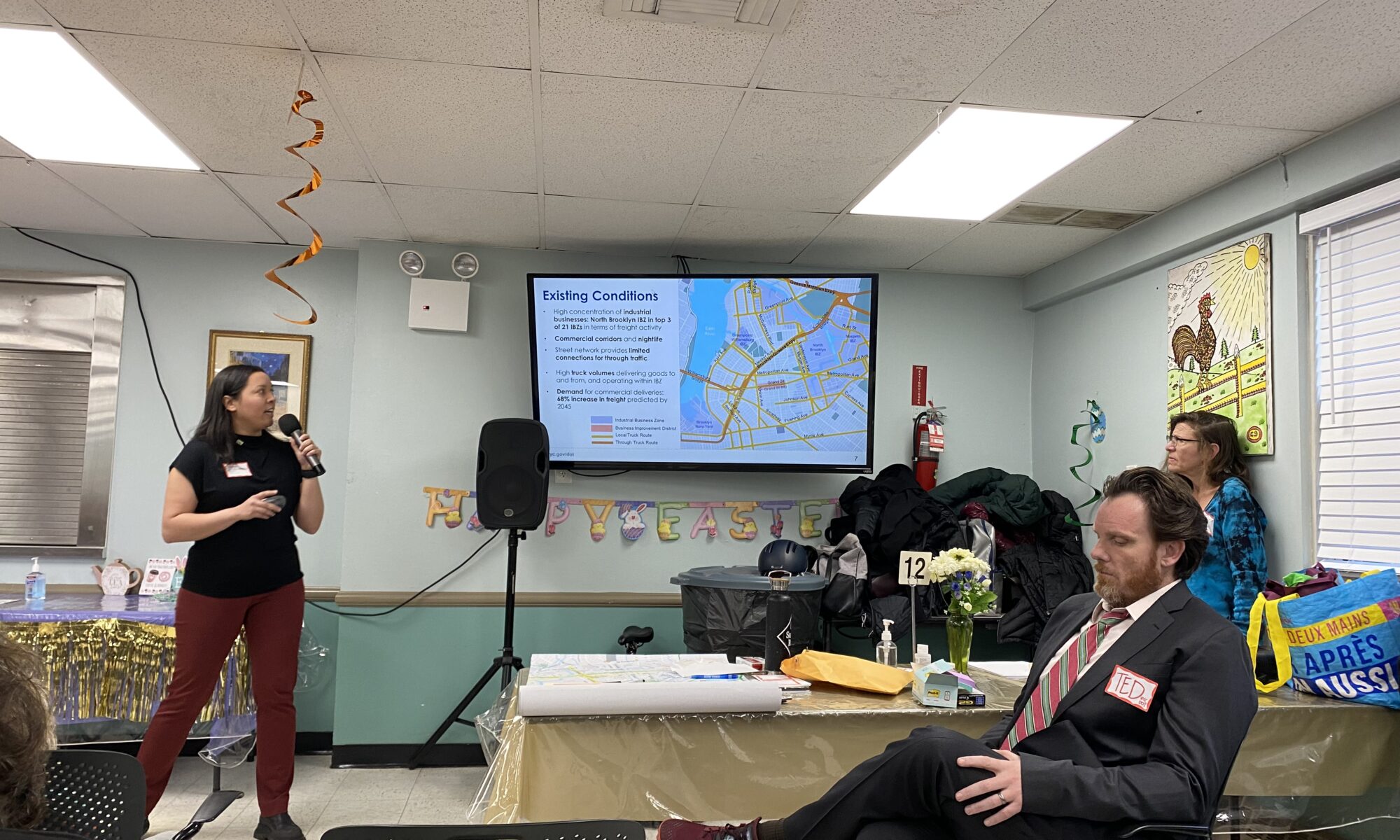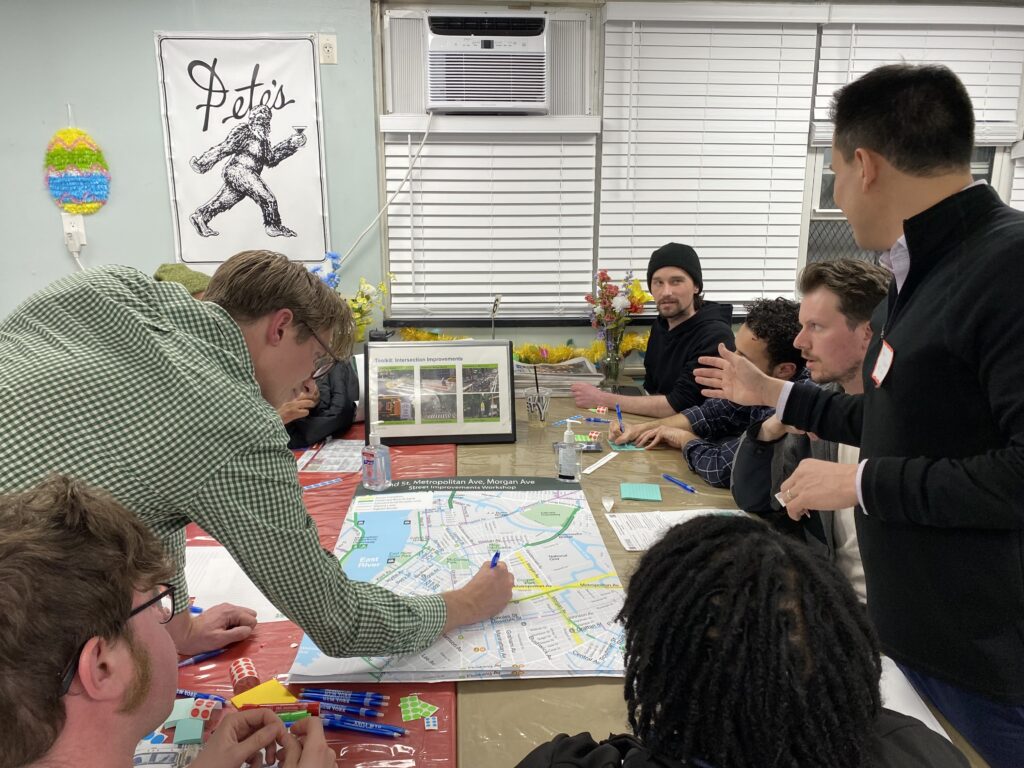By Oona Milliken | omilliken@queensledger.com
The NYC Department of Transportation announced Aug. 16 that they would move forward with a compromised plan of the McGuinness redesign in Greenpoint after years of meetings with elected officials, community advocates and residents.
The new plan, one of three potential candidates for redesign of the street, includes adding a protected bike lane on each side of moving traffic and removing a lane for cars and other automated vehicles. Construction is set to begin in September, according to the DOT.
Marisa LaScala, a parent at PS 34, said she is happy that community efforts to make McGuinness safer have finally paid off.
“I have a kid that goes to school at one of the schools right off McGuinness, and it’s really frightening seeing the way cars whip around the turn or creep into the crosswalk, so anything to make that a little safer is just such a load off,” LaScala said. “I like the idea of taking it down to one car on each side, I think that would be a big step forward in terms of safety.”
The push to renovate the street, which gained traction in 2021 after a beloved local teacher Matthew Jensen was killed on the road, has embroiled Greenpointers in a controversy for over two years. Two competing factions, Make McGuinness Safe in favor of the redesign, and Keep McGuinness Moving in opposition, have clashed over whether or not McGuinness needs a revision. Kevin LaCherra, a local activist and coordinator for Make McGuinness Safe, said that the road is too dangerous to stay.
“In the wake of Matt’s death in 2021, we came together, led by the parents of PS 110, and we said ‘This is not an acceptable situation,’” LaCherra said. “McGuinness Boulevard has been killing people since the moment it opened, the moment they widened the street and built a highway through Greenpoint. That status quo has been hurting people for 70 years, and has been killing people for 70 years. Dozens and dozens and dozens of people have been killed.”
According to LaCherra, the efforts to modify the street has been a long and difficult fight, but he is pleased to see the proposal going forward, even if all the proposed safety measures by officials and local community leaders were not met. Averianna Eseinbach, a Greenpoint resident involved in Keep McGuinness Moving, said traffic flow on McGuinness needs to be kept in motion, and that there were other ways to reduce accidents that do not remove any lanes of traffic,
“We do need to preserve four lanes on McGuinness to prevent gridlock because it’s such a major artery in Greenpoint. This region has thousands of businesses that rely on McGuinness. It’s the only North-South artery in the area, and yet businesses were left out of the conversation,” Eseinbach said. “I like raised crosswalks, that would definitely improve pedestrian safety. More red light cameras, and rumble strips at the foot of the bridge.”
LaCherra said these efforts are not enough to prevent deaths, and that there have been two years of conversations with various factions of the Greenpoint community on the best way to reduce deaths on the boulevard.
“The reality is that the sort of things that Keep McGuinness moving are proposing are either things that have already been publicly adjudicated, or are things that we are also asking for, they’re just insufficient to tackle the scale of the problem,” LaCherra said. “We’re all in favor of raised crosswalks, raised crosswalks would be great, but they do nothing to disincentivize the massive amount of traffic coming onto the boulevard off of the outer highway.”
LaScala said she does not understand why anyone would be opposed to the redesign, and that she is proud of the way that the neighborhood fought for a change on McGuiness.
“I actually can’t really understand why someone would look at this and say they would be against it,” LaScala said. “It was really inspiring to see the way that the neighborhood came together. I went to the rally, I saw other parents from my kids’ schools, parents from other schools. It just seems like people can really come together and make their voices heard, and actually affect change.”


